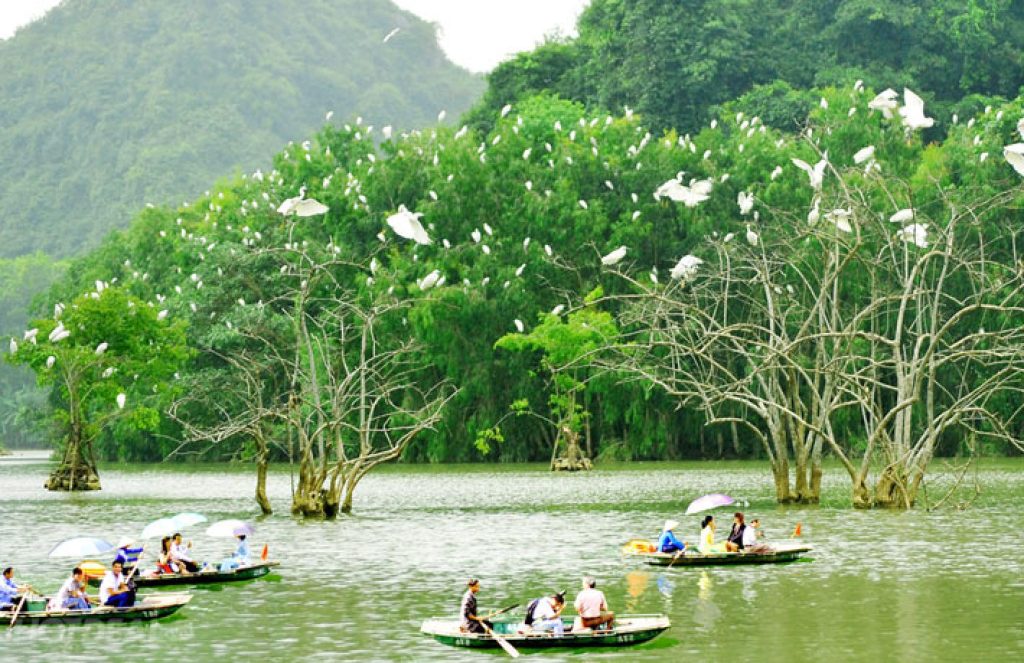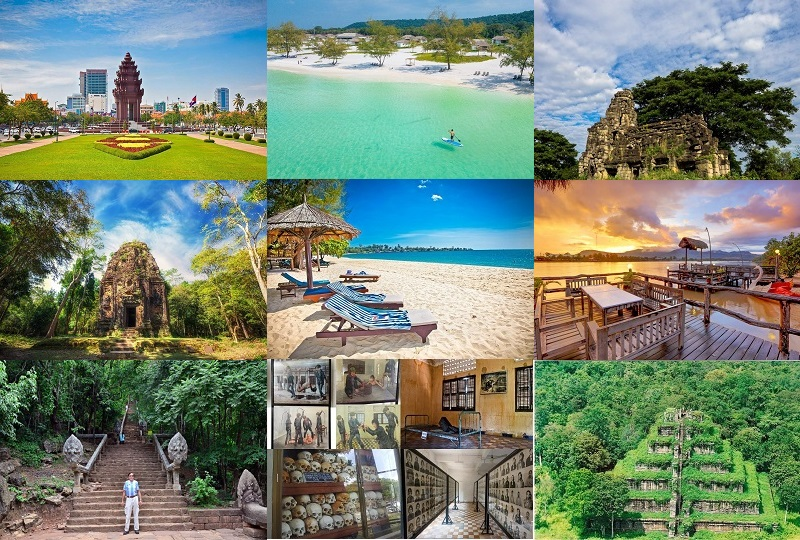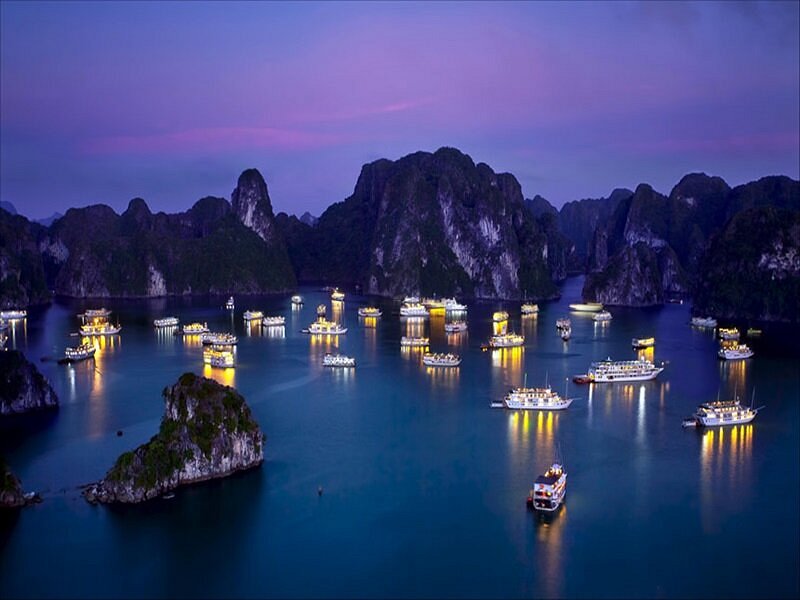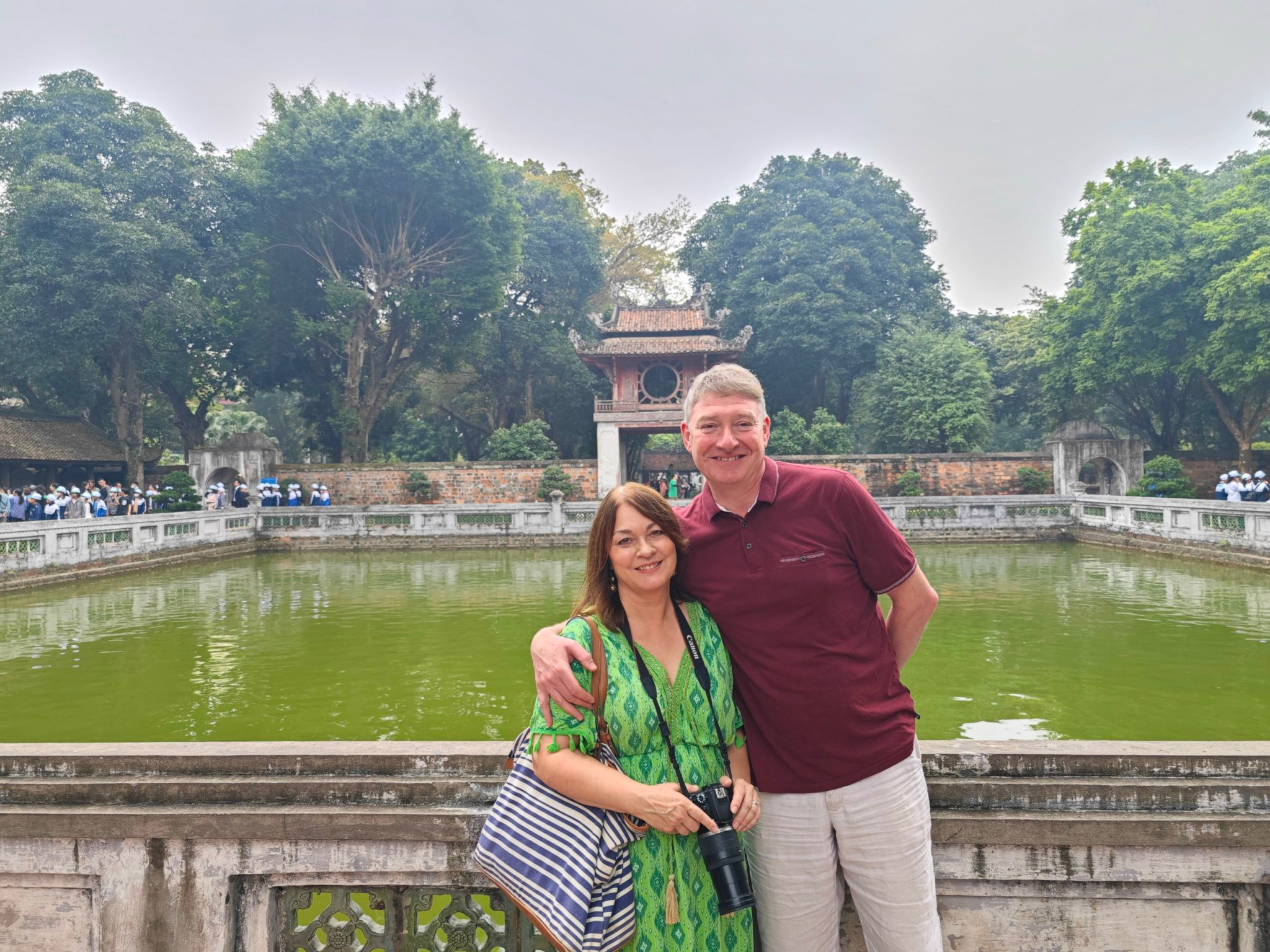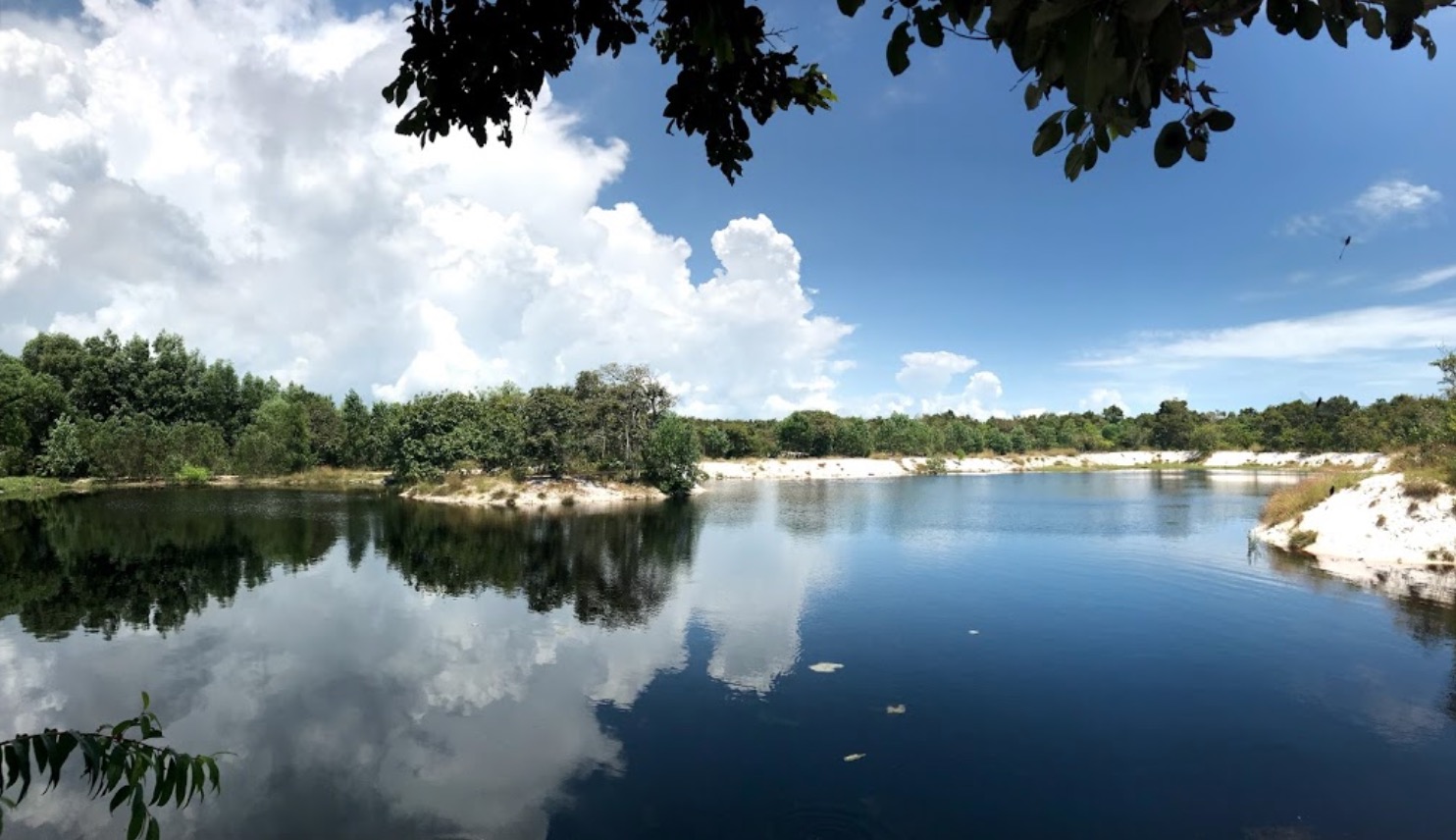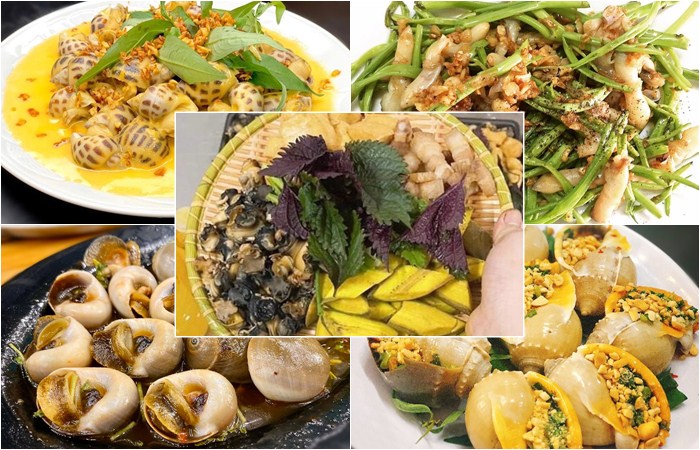
Ninh Binh, located in northern Vietnam, is renowned for its breathtaking landscapes and rich cultural heritage. Often dubbed the “Halong Bay on land,” Ninh Binh boasts towering limestone karsts, verdant rice paddies, and meandering rivers. The province is home to several must-see attractions, including the Trang An Landscape Complex, Tam Coc-Bich Dong, and the ancient capital of Hoa Lu. Visitors to Ninh Binh can indulge in boat rides through caves and emerald-green waters, explore ancient temples and pagodas, and hike along scenic countryside trails. With its natural beauty and historical significance, Ninh Binh offers a distinct and memorable travel experience in Vietnam. When is the best time to visit Ninh Binh? I’ll provide an overview of Ninh Binh’s weather in this article.
Ninh Binh Weather At A Glance
Ninh Binh, located in the north of Vietnam, has four seasons, each offering special experiences and sights for visitors. Let’s take a closer look at the weather in Ninh Binh throughout the year:
Winter (December – February)
Winter in Ninh Binh brings cooler temperatures and less rain. Days are nice and sunny, but nights can get cold, especially in northern Vietnam. Sometimes, fog covers the land, making Ninh Binh’s scenery even more mysterious. Winter is a great time to visit Ninh Binh’s cultural sites and historical places without dealing with the hot weather and big crowds of tourists.
Spring (March – April)
Spring brings new life to Ninh Binh after the winter chill. Flowers bloom, and everything turns green. The weather gets warmer, perfect for outdoor activities. Sometimes, there are light rains that make the scenery even prettier.
Summer (May-August)
Summer is the hottest and rainiest time in Ninh Binh. The sun shines bright but can get hot and humid during the day. Summer rains cool things down a bit, and help plants grow.
Autumn (September – November)
Autumn in Ninh Binh is lovely, with clear skies and cooler weather. The intense heat of summer fades away, making it a pleasant time to explore. The leaves on the trees change color, painting Ninh Binh in red, orange, and gold shades.
In summary, Ninh Binh’s weather changes throughout the year, giving visitors different experiences depending on the season. While each season has its perks, the best times to visit Ninh Binh are spring (March – April) and autumn (September – November), with stunning weather and scenery.
Ninh Binh Weather and Climate by Month
January – March (Dry Season)
In these months, Ninh Binh enjoys a cool and dry climate, with temperatures averaging between 10°C to 20°C (50°F to 68°F). The days are usually sunny with clear skies, perfect for outdoor activities and exploring the sights.
April – September (Wet Season)
This period brings the wet season to Ninh Binh, featuring hot and humid weather with temperatures ranging from 30°C to 38°C (86°F to 100°F). Heavy rainfall is common, especially from May to August, along with occasional thunderstorms and typhoons. Despite the rain, the lush green landscapes and rice paddies are at their most vibrant during this time.
October – December (Transitional Period)
During these months, Ninh Binh transitions from the wet to the dry season. Temperatures start to cool down, with average highs ranging from 20°C to 25°C (68°F to 77°F). Rainfall gradually decreases, leading to more comfortable and pleasant weather conditions. October and November are often considered the best months to visit Ninh Binh, offering mild temperatures and lower humidity levels, ideal for outdoor exploration and sightseeing.
Best Time to Visit Ninh Binh

The best time to visit Ninh Binh in northern Vietnam is spring (March to April) and autumn (September to November). During these periods, the weather is generally pleasant, with comfortable temperatures and lower humidity levels, making it ideal for outdoor activities and exploring the region’s natural beauty. Here’s more detail on each season:
Spring – the season of festival
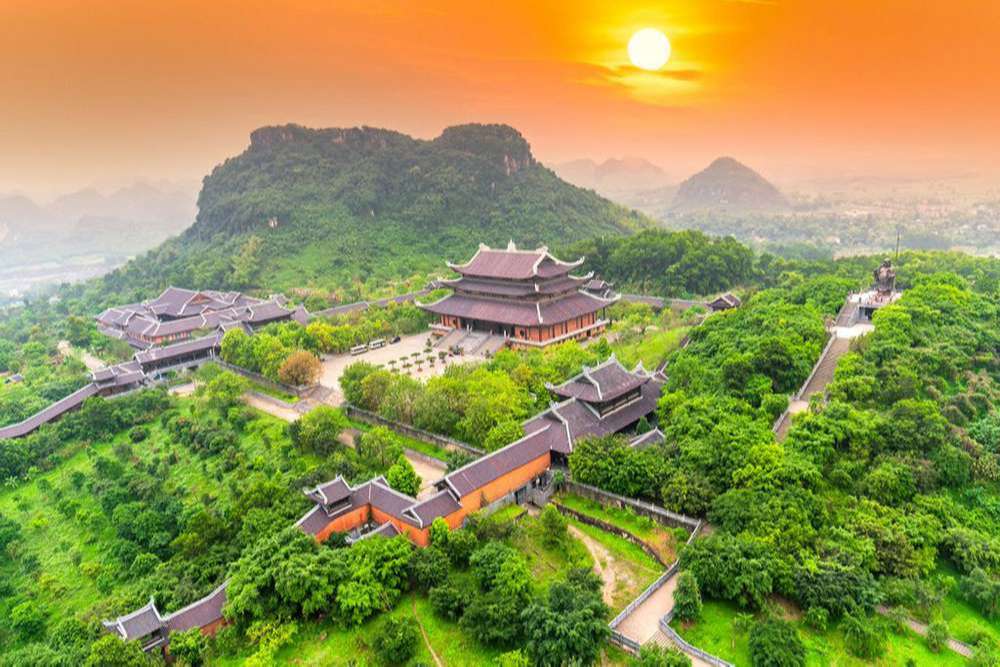
During spring, Ninh Binh enjoys mild temperatures and lower humidity, typically ranging from 20°C to 25°C (68°F to 77°F). The landscape bursts into life with blooming flowers, lush greenery, and vibrant colors, providing a stunning backdrop for outdoor activities. It’s the perfect season to explore Ninh Binh’s natural beauty and cultural heritage.
One of the most anticipated events during spring is the Bai Dinh Pagoda Festival. This annual celebration attracts thousands of visitors who witness colorful parades, traditional music and dance performances and indulge in various food and craft vendors. If you plan to attend this festival, mark your calendar for the lunar new year, usually in late January or early February.
Another spring highlight in Ninh Binh is the Trang An Festival, which celebrates the region’s natural beauty and cultural significance. Visitors can enjoy boat tours of the Trang An scenic landscape complex, traditional performances, and other activities that showcase the area’s rich heritage.
Summer – the season of the yellow color of paddy rice fields
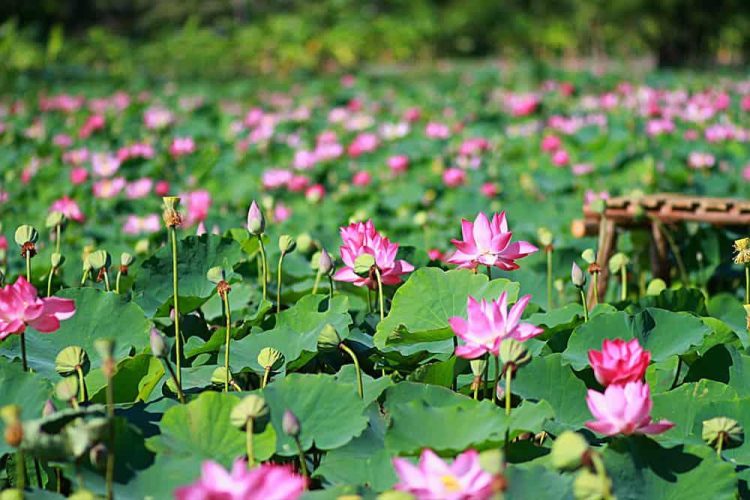
In summer, Ninh Binh encounters elevated temperatures and humidity levels, often ranging from 28-35°C (82-95°F). Despite the heat, this period remains a favored time for tourists to explore the region, as many utilize their summer holidays for a visit. Particularly in late June to July, the landscape is adorned with blooming lotus flowers, emitting a captivating display of vibrant colors and a distinctive fragrance.
Moreover, summer presents the prime opportunity to witness Ninh Binh’s golden rice fields. Typically occurring from mid-May to early June, the harvest season showcases the fields in full bloom, casting a mesmerizing hue of gold as the rice plants mature. The timing may vary slightly depending on weather conditions and the rice planting cycle.
For travelers planning a summer excursion to Ninh Binh, many water-based activities await. From leisurely boat tours to exhilarating kayaking adventures, this season offers optimal conditions for outdoor pursuits.
Autumn
Autumn provides an excellent opportunity to explore Ninh Binh, with its pleasant temperatures and clear skies creating ideal outdoor activity conditions. Temperatures typically range from 20°C to 28°C (68°F to 82°F), offering travelers a comfortable climate to visit popular attractions like Tam Coc, Trang An, and Bai Dinh Pagoda. Additionally, autumn marks the harvest season in Ninh Binh, allowing visitors to witness local farmers tending to rice paddies and gathering crops.
Exploring renowned sites such as Trang An, Tam Coc, and Tuyet Tinh Coc allows visitors to marvel at the breathtaking beauty of Ninh Binh. Furthermore, destinations like Cuc Phuong National Park and Thung Nham Bird Park provide opportunities to immerse oneself in nature and observe endangered wildlife.
Don’t forget to indulge in Ninh Binh’s specialties when visiting in the fall. Swamp eel salad and mountain goat meat are renowned dishes that promise a memorable culinary experience.
Winter
Winter in Ninh Binh brings cool and dry weather, with temperatures typically ranging from 10°C to 20°C (50°F to 68°F). What sets this season apart is the mesmerizing bloom of reed flowers, which cover the landscape in pristine white and lend a unique charm to the region.
Winter also offers an excellent opportunity to explore attractions like the Trang An Landscape Complex, Bai Dinh Pagoda, or Hoa Lu Cave. Visitors can immerse themselves in these sites’ serene atmosphere and poetic beauty amidst the chilly days.
Ninh Binh is renowned for its culinary delights in winter, including specialties such as Gao fruit, rice crust, mountain goat meat, and eel noodles. These delicacies make Ninh Binh a culinary haven for visitors seeking a taste of local flavors during the winter months.
Frequently asked questions
1. What is the coldest month in Ninh Binh?
In Ninh Binh, Vietnam, January is usually the coldest month. During this time, temperatures can reach their lowest points of the year, especially in the early morning and at night. The average temperature in January is between about 15°C to 20°C (59°F to 68°F). Even though daytime temperatures might not be too cold, especially when compared to colder places, the nights can feel chilly, especially if you’re not used to cooler weather. If you’re visiting Ninh Binh in January, bring warm clothes to stay cozy, especially if you plan to spend time outdoors.
2. How much rain does Ninh Binh get every year?
Ninh Binh receives a lot of rain annually, especially during the wet season. It receives about 1,500 to 1,800 millimeters (59 to 71 inches) of rain annually. The wet season usually lasts from May to October, with the most rain falling from June to August. During this time, Ninh Binh can experience heavy rain and sometimes even typhoons, which can cause flooding in some areas. On the other hand, the dry season runs from November to April and has less rain. However, there might still be occasional showers, especially in March and April, when the seasons change.
3. What month has the least rain in Ninh Binh?
In Ninh Binh, Vietnam, January usually has the least rain. This is when the weather gets drier as the region moves from the wet to the dry season. January is the start of the dry season in Ninh Binh, and there’s less rain than the rainy months before it.
4. What months are the most humid in Ninh Binh?
In Ninh Binh, Vietnam, the most humid time usually happens during the peak of the rainy season from May to October. It gets humid because it’s warm and there’s a lot of rain during these months. Specifically, June, July, and August are the most humid months in Ninh Binh. During this time, the humidity can go over 80% or even more, especially on rainy days or right after it rains. The warm and damp air and all the rain make the whole area feel humid and sticky.
5. What month has the least sunshine in Ninh Binh?
In Ninh Binh, Vietnam, January usually has the least sunshine. This means fewer hours of daylight and more clouds than in other months. In January, Ninh Binh starts moving from the wet season to the dry season. Even though it rains less in January, it’s still common to have cloudy skies and a lot of clouds.
6. Which month has the most daylight in Ninh Binh?
In Ninh Binh, Vietnam, the month with the most daylight usually happens in June, which is during the summer season in the Northern Hemisphere. In June, the days are the longest, and the nights are the shortest, giving us the most daylight hours. In June, Ninh Binh has the summer solstice, the day with the longest amount of daylight in the year. This happens around June 21st or 22nd every year. During the summer solstice, the sun is at its highest point in the sky, so we get lots of daylight, which gives us plenty of time for outdoor activities and exploring.
7. What is the hottest month in Ninh Binh?
July is usually the hottest month in Ninh Binh, Vietnam. This is when summer is at its peak, getting hot and humid. In July, the average daily temperatures in Ninh Binh can reach their highest points, with daytime highs often going over 30°C (86°F) and sometimes even reaching the mid-38s Celsius (over 100°F). The heat can feel intense with the high humidity added in, especially during the day.
8. When does Ninh Binh have the most sunshine?
In Ninh Binh, Vietnam, the sun shines the most during the dry season, which lasts from October to April. Among these months, December, January, and February usually have the clearest skies and the most sunny days. In the dry season, Ninh Binh experiences less rain and more stable weather. This means longer stretches of sunny weather. With fewer clouds, the sun shines brightly throughout the day, making it perfect for outdoor activities and exploring.
Read more: Travel Agency Vietnam: Best Travel Agency for Vietnam Tours
9. What month has the most rainfall in Ninh Binh?
In Ninh Binh, Vietnam, the month with the most rain usually happens during the peak of the wet season, which lasts from May to September. Among these months, July and August typically see the highest rainfall. During July and August, Ninh Binh gets a lot of rain because it’s the peak of the summer monsoon season. This time is known for frequent rain showers, thunderstorms, and sometimes even typhoons. These months match up with the southwest monsoon, which brings a lot of moist air from the South China Sea, causing heavy rainfall. If you plan to visit Ninh Binh during these months, it’s important to be ready for rainy weather and possible disruptions to outdoor activities. Bring rain gear, plan indoor activities as a backup, and stay updated on weather forecasts and potential dangers.
10. What month has the least humidity in Ninh Binh?
In Ninh Binh, Vietnam, the month with the lowest humidity is usually during the dry season, from October to April. Specifically, December, January, and February have less humidity compared to other times of the year. In the dry season, the humidity in Ninh Binh goes down because there’s less rain, and the air doesn’t hold as much moisture. Since there are fewer clouds and rain, the air feels drier and more comfortable, especially in the cooler months of December, January, and February. Even though humidity levels might change depending on daily weather and local factors, visitors to Ninh Binh can generally expect less humidity during the dry season. This makes it a great time to explore the area’s natural sights, do outdoor activities, and enjoy the beautiful landscapes of Ninh Binh.
11. Which month has the shortest daylight in Ninh Binh?
In Ninh Binh, the month with the shortest daylight usually happens in December, especially around the winter solstice around December 21st or 22nd every year. During this time, Ninh Binh has its shortest day and longest night. The winter solstice occurs when the North Pole is tilted farthest away from the sun in Earth’s orbit. This leads to the shortest daylight time in the Northern Hemisphere. In Ninh Binh, this means fewer hours of daylight and longer nights during December.
In conclusion
Ninh Binh, Vietnam, has a variable temperature throughout the year, with each season providing distinct experiences for visitors. The best months to visit Ninh Binh are March to April and September to November, when the weather is ideal for outdoor activities and experiencing the region’s natural beauties. The ideal time to visit Ninh Binh is based on personal choices and interests. Whether you prefer moderate weather for outdoor excursions or want to see the region’s natural beauty in full bloom, Ninh Binh has lots to offer all year. Vietnam Tour 247
Read more: Finding Your Perfect Places To Stay In Ninh Binh

